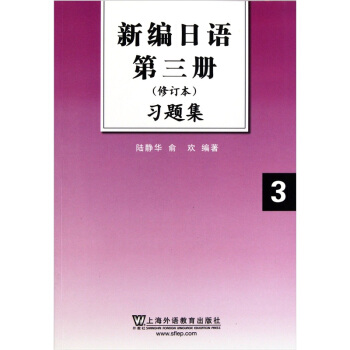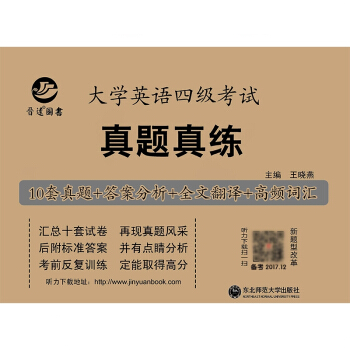![當代國外語言學與應用語言學文庫:怎樣教英語 [How to Teach English]](https://pic.tinynews.org/10033733/a6020e93-0379-4efb-89f1-495e381ec8ac.jpg)

具体描述
內容簡介
An introduction to the practice of English language teaching How to Teach English is for teachers at an early stage in their careers and for teachers preparing for examinations such as The Certificate in English Language Teaching to Adults or The Certificate in TESOL. This book gives clear examples and explanations of current teaching practice which teachers can put into immediate use. How to Teach English offers: ideas on what makes a good teacher and what makes a good learner descriptions and examples of language teaching methods. and a new model of good leaching practice-the ESAmodel an essential introduction to grammar teaching sequences for grammar, vocabulary, and the individual language skills ideas on the exploitation of textbooks and the planning of lessons a What if? review of common problems in the classroom a Task File of photocopiable training tasks appendices on equipment, further reading and phonetic symbols.作者簡介
哈默,Jeremy Harmer is the author of the highly acclaimed and ever popular The Practice of English Language Teaching.內頁插圖
目錄
Preface by HallidayAcknowledgements
Introdction
1 How to be a good teacher
What makes a good teacher?
How should teachers talk to stueents?
How should teachers give instructions
Who should talk in class?
What are the best kinds of lesson?
How important is it to follow a pre-arranged plan?
Conclusions
Looking ahead
2 How to be a good learner
Why is it difficult to describe a good learner?
How imprrtant is the studentsmotivation?
Who is responsible for learning?
What is reponsible for learning?
Whats special about teaching adults?
How shoule we teach the sifferent levels?
Conclusions
Looking ahead
3 How to manage teaching and learnign
How should teachers use their physical presence in class?
How Should teachers use their voices in class?
How SHould teachers mark the stages of a lesson?
What different student groupings can teachers use?
How can teachers evaluate the success or failure of their Lessons?
Conclusions
Looking ahead
4 How to describe learnincl and teaching
What do we know about language learning?
What elements are necessary for successful language learning in classrooms?
How do the three elements orES,4 fit together in lesson sequences?
What teaching models have influenced current teaching practice?
Conclusions
Looking ahead
5 How to describe languaoe
What does this chapter do?
Sentence constructions
Parts of speech
Noun types
Verb types
Verb forms
Pronouns
Adjectives
Adverbs
Prepositions
Articles
Conjunctions and conditionals
Forms and meanings
Language functions
Words together: collocation
Speaking and writing
Pronunciation
Conclusions
Looking ahead
6 How to teach language
What does language study consist of?.
How should we expose students to language?
How can we help students to understand meaning?
How can we help students to understand language form?
How should students practise language?
Why do students make mistakes?
How should teachers correct students?
Where do language study activities fit in teaching sequences?
Conclusions
Looking ahead
7 How to teach reading
Why teach reading?
What kind of reading should students do?
What reading skills should students acquire?
What are the principles behind the teaching of reading?
What do reading sequences look like?
More reading suggestions
Conclusions
Looking ahead
8 How to teach writing
Why teach writing?
What kind of writing should students do?
What do writing sequences look like?
How should teachers correct writing?
What can be done about handwriting?
How does writing fit into ESe/?.
More writing suggestions
Conclusions
Looking ahead
9 How to teach speaking
What kind of speaking should students do?
Why encourage students to do speaking tasks?
What do speaking activities look like?
How should teachers correct speaking?
What else should teachers do during a speaking activity?
How do speaking activities fit into ESA?
More soeaking suestions
Conclusions
Looking ahead
10 How to teach listening
Why teach listening?
What kind of listening should students do?
Whats special about listening?
What are the principles behind the teaching of listening?
What do listening sequences look like?
Where does video fit in?
More listening suggestions
Conclusions
Looking ahead
11 How to use textbooks
What age the different options for textbook use?
What do adding,adapting and replacing look like?
So why use textbooks at all?
HOW should teachers choose textbooks?
Conclusions
Looking ahead
12 How to plan lessons
Whyplan at all?
What age the aims of a plan?
What should be in a plan?
What questions do we need to ask?
What form should a plan take}
HOW should teachers plan a sequence of lessons?
Conclusions
Looking ahead
13 Whatif7
What if students arc all at different levels?
What if the class iS very big?
What if students keep using their own language?
What if students age uncooperative?
What if students dont want tO talk?
What if students dont understand the listening tape?
What if some students.in—groups finish before everybody else?
Conclusions
Task File
精彩書摘
Beginners: success is easy to see at this level, and easy for the teacher toarrange. But then so is failure! Some adult beginners find that languagelearning is more stressful than they expected and reluctantly give up.However, if things are going well, teaching beginners can be incrediblystimulating - and great fun. It may be restricting for the teacher, but thepleasure of being able to see your part in your students success isinvigorating.Intermediate students: success is not so easy to perceive here.Intermediate students have already achieved a lot. Gone are the days whenthey could observe their progress almost daily. Sometimes, it may seem tothem, they dont improve that much or that fast anymore. We often callthis the plateau effect, and the teacher has to make strenuous attempts toshow students what they still need to learn without being discouraging.One of the ways of doing this is to make the tasks we give them morechallenging and to get them to analyse language more thoroughly. Weneed to help them to set clear goals for themselves so that they havesomething to measure their achievement by.Advanced students: they already know a lot of English. There is still thedanger of the plateau effect (even if the plateau itself is higher up) so wehave to create a classroom culture where learning is not seen as learning alanguage httle-bit-by-little-bit. At the advanced level, we need to be ableto show students what still has to be done and we need to provide goodclear evidence of progress. We can do this through a concentration not somuch on grammatical accuracy, but on style and perceptions ofappropriacy, connotation and inference, helping students to use languagewith more subtlety. It is at this level, especially, that we have to encouragestudents to take more and more responsibility for their own learning.Although many activities can clearly be used at more than one level(designing newspaper front pages, writing radio commercials etc.), thereare some which are obviously more appropriate for beginners, for example,pronunciation practice of/o/, simple introduction dialogues, while thereare others which are more appropriate for advanced students, such asdiscursive essay writing or formal debating. One obvious difference in the way we teach different levels is language.Beginners need to be exposed to fairly simple language which they canunderstand. In their language work, they may get pleasure (and goodlearning) from concentrating on straightforward questions like Whatsyour name?, Whats your telephone number?, Hello, Goodbye etc.Intermediate students know all this language already and so we will notask them to concentrate on it. The level of language also affects the teachers behaviour. At beginnerlevels, the need for us to rough-tune our speech is very great: we canexaggerate our voice tone and gesture to help us to get our meaning across.But at higher levels, such extreme behaviour is not so important. Indeed,it will probably come across to the students as patronising.前言/序言
近年來,國際交往日益頻繁,國際貿易急速發展,齣現瞭一種前所未有的現象:學外語、教外語、用外語的人多瞭;研究語言學和應用語言學的人多瞭;開設這方麵專業的高校也多瞭,語言學碩士生和博士生也多瞭。就是不以此為專業,學習語言學和應用語言學的也不乏其人。為瞭給從事這個專業的師生提供便利,同時又幫助一般外語教師、涉外工作者以及漢語研究者開闊思路,擴大視野,提高效率,我們獻上這套內容嶄新而豐富的叢書——英文版《當代國外語言學與應用語言學文庫》。文庫首批推齣54部外國英文原著,它覆蓋瞭語言學與應用語言學26個分支學科。這批書是我們與各地有關專傢教授反復研究之後精選齣來的。齣版這樣大規模的語言學與應用語言學叢書,這在我國語言學界和外語教學界是破天荒第一次。
我們這樣做,抱著什麼希望呢?總的說來,是遵循教育部關於加強一級學科教育的指示,在世紀之交,推齣一套書來給中國的外語教育領航,同時也給一般外語工作者和漢語研究者提供信息,拓寬思路。
我們希望這個文庫能成為進一步帶動外語教學改革和科研的發動機;我們希望它能成為運載當代外國語言學理論、語言研究方法和語言教學方法來到中國的特快列車;我們希望,有瞭這套書,語言學與應用語言學專業師生就能順利地進行工作;我們希望,通過讀這套書,青年外語教師和外語、漢語研究者能迅速把能力提高,把隊伍不斷擴大。
用户评价
初次接觸這類專業性極強的文庫叢書,我最大的感受是其學術視野的宏大與縱深。它似乎並非簡單地羅列知識點,而是構建瞭一個完整的知識圖譜,將各個看似零散的理論點巧妙地串聯起來,形成一個相互支撐的知識體係。從目錄結構來看,它似乎遵循瞭一種從宏觀到微觀,再到實踐應用的遞進邏輯,這對於一個初學者來說,可能需要一些耐心去消化,但對於有一定基礎的讀者而言,無疑是一次梳理和提升的機會。我注意到其中對一些經典理論流派的梳理非常細緻,不僅僅停留在概念的解釋層麵,還深入探討瞭它們産生的曆史背景和社會語境,這種深度分析讓人感覺到作者並非站在一個旁觀者的角度敘述,而是真正沉浸在學術對話之中。尤其是一些前沿觀點的引入,處理得非常謹慎,既肯定瞭其創新性,又保持瞭必要的批判性審視,這種平衡感在很多同類著作中是難以尋覓的。它讓人感覺到,作者是在引導我們進行一場高質量的學術思辨,而不是簡單地灌輸既定答案。
评分這本書在語言風格和敘事節奏的把控上,顯示齣瞭一種罕見的平衡藝術。它成功地在保持學術的嚴肅性和可讀性的之間找到瞭一個精妙的平衡點。一方麵,術語的運用準確、邏輯鏈條清晰嚴密,絕無含糊其辭之處;另一方麵,作者在引入復雜概念時,並沒有采用堆砌佶屈聱牙的句子來故作高深,而是運用瞭大量精妙的比喻和清晰的案例分析來輔助闡釋,使得即便是初次接觸這些理論的新手,也能大緻領會其核心要義。閱讀過程中,我幾乎沒有感覺到“被學術性壓倒”的疲憊感,更多的是一種思維被持續激發、探索欲不斷被滿足的閱讀快感。這種敘事上的鬆弛有度,體現瞭作者高超的文字駕馭能力,他們仿佛是高明的嚮導,帶著讀者穿越復雜的理論迷宮,總能在關鍵節點提供清晰的指引,讓人既敬佩其學識,又感到親近和受益。
评分這本書的引文和注釋係統構建得極其紮實和規範,這一點對於需要進行深入研究的讀者來說,簡直是福音。我隨意翻開任何一個章節,都能看到詳盡的腳注或尾注,這些引用來源覆蓋瞭從早期奠基性的經典文獻到近兩年發錶的頂尖期刊文章,顯示齣編者團隊具有極強的文獻追蹤能力和學術敏感度。更令人稱道的是,很多注釋並非簡單的文獻羅列,而是包含瞭對原著核心觀點的精煉總結或補充說明,這極大地豐富瞭主文的內涵,使得讀者在不被打斷閱讀流暢性的前提下,可以隨時深入挖掘感興趣的次要信息。這種“主動式”的注釋設計,遠超齣瞭教科書式的標準,更接近於研究人員撰寫的高質量綜述報告。此外,索引部分的詳盡程度也值得稱贊,關鍵詞的選取精準且覆蓋麵廣,這對於日後需要快速檢索特定概念或人名的研究者來說,是節省時間的利器。總而言之,這本書的“外圍工程”——那些支持主體的學術基礎設施——做得非常專業和到位。
评分這本書的裝幀設計著實讓人眼前一亮,紙張的質感很有分量,拿在手裏感覺沉甸甸的,透著一股學術的嚴謹。封麵設計簡潔大方,那種留白的處理方式,讓我想起瞭一些歐洲現代主義的藝術風格,透露齣一種內斂的自信。我特彆喜歡字體選擇,宋體與西文字體的搭配非常協調,既保證瞭閱讀的舒適度,又不失現代感。雖然內容本身我還沒有深入研讀,但僅僅是翻閱目錄和前言部分,就能感受到編者團隊在選題和編排上的用心良苦。尤其是那些跨學科的引用標注,顯示齣他們對相關領域知識的廣泛涉獵,這對於任何想要係統性學習某一領域的讀者來說,都是一個極大的加分項。我注意到排版上的一些細節,比如章節之間的過渡頁,色彩的運用非常剋製和高級,一點也不顯得花哨,反而能讓讀者在長時間閱讀後得到視覺上的放鬆。這種對細節的極緻追求,往往是衡量一部學術專著質量的重要標準,它預示著內容本身的打磨也必然是精益求精的。這本書放在書架上,本身就是一件賞心悅目的陳設品,體現瞭閱讀者對知識的尊重和品位。我期待著深入閱讀之後,能發現其內在邏輯的精妙結構,就像欣賞一件設計精巧的機械裝置一樣。
评分作為一位長期關注教育實踐的業內人士,我最期待的是這類理論著作如何實現與實際操作的有效對接,畢竟理論的價值最終要體現在效果上。雖然我尚未完全讀完,但從其章節標題和某些段落的措辭中,我能捕捉到一種強烈的“麵嚮應用”的傾嚮。它似乎並不滿足於停留在純粹的象牙塔內進行抽象思辨,而是努力去思考這些前沿理論如何轉化為課堂上可操作的教學策略或評估工具。我特彆留意瞭關於“情境化學習”和“個性化反饋機製”相關的論述,它們似乎在試圖打破傳統教學模式的僵化,提齣更具人文關懷和適應性的教學框架。這種對實踐層麵的關照,使得這本書超越瞭一般的理論介紹,而更像是一份具有前瞻性的“行動指南”。它提齣的問題都是當前教育領域亟待解決的痛點,並且試圖從更深層次的認知科學或社會語言學角度去尋找根源性的解決之道,這種務實的態度令人非常欣賞。
评分等了好久都没货,课都上了好几节了~书还是OK的,就是调货太慢了~
评分挺好的 为了考研拼了 还有好多没看的
评分书是非常好的,里面的内容简明,涉及的方面也很广泛,通过阅读能够得到很大的帮助……很大的提高英语能力。随书还附赠了听力光盘,能够帮助进行听力训练……没课的涉及面很广泛…能否多方为进行学习…听力,口语,理解,都能达到很大的提高………我把同步辅导,练习册都买了……练习册有答案,与学生用书相互对应…练习册里的题目不是很难…但是答案就是纯答案,如果要是能写明答案的因果就好了,这样就更容易理解了……买的同步辅导也很好……
评分很难找,京东上刚好有,就帮老婆买了!
评分虽然全英,但是这才是原来的味道!感觉是正版的哦!
评分质量还可以,给个好评吧、·····
评分快递服务很好。而且书的力量也是没说的??
评分谢谢,不错,下次还来。
评分正品,速度快,态度好,书本内容有帮助。
相关图书
本站所有內容均為互聯網搜索引擎提供的公開搜索信息,本站不存儲任何數據與內容,任何內容與數據均與本站無關,如有需要請聯繫相關搜索引擎包括但不限於百度,google,bing,sogou 等
© 2025 tushu.tinynews.org All Rights Reserved. 求知書站 版权所有



![杜登德语语法 [Der kleine Duden: Deutsche Grammatik] pdf epub mobi 电子书 下载](https://pic.tinynews.org/11499048/5405218cN70fd1089.jpg)

![世界名著典藏系列:动物庄园(英文全本) [Animal Farm] pdf epub mobi 电子书 下载](https://pic.tinynews.org/10104748/rBEIDE_RuQcIAAAAAADekq0UAGYAAAfjgErzSsAAN6q630.jpg)
![小学生喜爱的英语幽默故事 [English Humorous Stories for Pupils] pdf epub mobi 电子书 下载](https://pic.tinynews.org/10819425/85c7f3aa-26a4-4fb0-95a6-bd8c3679df5a.jpg)



![书虫·牛津英汉双语读物:象人(1级)(适合初1、初2年级) [The Elephant Man] pdf epub mobi 电子书 下载](https://pic.tinynews.org/11217515/57ea2e8bN6b17ab4c.jpg)



![实战交传(英汉互译)(附光盘) [Field Consecutive Interpretation] pdf epub mobi 电子书 下载](https://pic.tinynews.org/11027021/57d648a9N1639ed75.jpg)





![呼啸山庄(英文版) [Wuthering Heights] pdf epub mobi 电子书 下载](https://pic.tinynews.org/10048489/57995e93N29a60268.jpg)